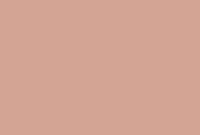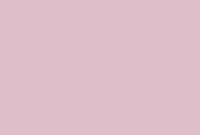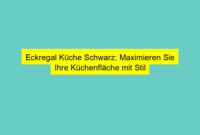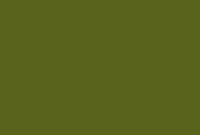Greetings, SanctuaryVF Reader! Today, we dive into the world of flachgewebe – a remarkable textile with a multitude of uses. With my years of experience working with flachgewebe, I am excited to share the ins and outs of this fabric with you. So, let’s embark on this journey together and explore everything flachgewebe has to offer!
The History of Flachgewebe
The Ancient Origins
Flachgewebe, translated as “flat weave” in English, traces its roots back to ancient civilizations. From the Egyptians to the ancient Greeks, this versatile textile was woven by skilled artisans using rudimentary looms. Its simplicity and durability made it a popular choice for various purposes, from clothing to household items.
The Renaissance of Flachgewebe
After centuries of being overshadowed by other fabrics, flachgewebe experienced a renaissance during the Renaissance! The demand for flat weave textiles skyrocketed due to their versatility and affordability. Craftsmen refined their techniques, resulting in intricate patterns and exquisite designs that adorned palaces, churches, and the clothing of the elite.
Modern Flachgewebe
In the modern era, flachgewebe continues to captivate with its timeless appeal. With advancements in technology, the production process has evolved, enabling the creation of more intricate designs and introducing a range of blends, colors, and textures. Today, flachgewebe is not only available to the elite but also accessible to individuals seeking quality textiles for various purposes.
The Uses of Flachgewebe
Flachgewebe in Fashion
Flachgewebe’s versatility shines in the world of fashion. Its flat and lightweight nature makes it a preferred choice for garments, both formal and casual. Flachgewebe dresses, shirts, and suits exude elegance and comfort, perfect for those special occasions or everyday wear. Additionally, designers often integrate flachgewebe as accents or linings to add texture and depth to their creations.
Flachgewebe in Interior Design
The world of interior design welcomes flachgewebe with open arms. This fabric’s flat weave and durability make it ideal for upholstery, curtains, and decorative trimmings. Whether used in homes, offices, or hotels, flachgewebe brings a touch of sophistication and character to any space. Its versatility allows designers to play with various patterns, colors, and textures, unleashing their creativity and transforming interiors into unique sanctuaries.
Flachgewebe in Home Accessories
When it comes to home accessories, flachgewebe is a reliable companion. From rugs and carpets to pillows and blankets, this textile enhances the coziness and visual appeal of any living space. Its flat construction ensures easy maintenance while the plethora of available designs ensures that there’s a perfect flachgewebe piece for every home. Embrace the charm of flachgewebe and elevate your interior style!
A Detailed Breakdown of Flachgewebe
Flachgewebe Type |
Description |
Common Use |
|---|---|---|
Traditional Flachgewebe |
A closely woven fabric with simple patterns. |
Traditional clothing, upholstery |
Patterned Flachgewebe |
Flachgewebe with intricate patterns and designs. |
Fashion accessories, interior decor |
Blended Flachgewebe |
Flachgewebe woven with blended fibers for added durability and texture. |
Upholstery, rugs |
Frequently Asked Questions about Flachgewebe
1. What is flachgewebe?
Flachgewebe is a type of textile characterized by a flat weave construction, making it durable and versatile.
2. Can flachgewebe be used for outdoor purposes?
While flachgewebe is not naturally resistant to weather elements, there are specially treated versions available that can withstand outdoor use.
3. How can I care for flachgewebe garments?
Regularly washing flachgewebe garments in cold water with mild detergent and avoiding harsh chemicals will help maintain their quality.
4. Are there different textures available in flachgewebe?
Yes, flachgewebe can have different textures depending on the weaving technique and fiber composition used.
5. Can flachgewebe be dyed in various colors?
Absolutely! Flachgewebe can be dyed in a wide range of colors, allowing for endless possibilities in design.
6. Is flachgewebe suitable for individuals with allergies?
Flachgewebe is hypoallergenic and does not attract dust mites or other common allergens, making it ideal for allergy-prone individuals.
7. How can I identify genuine flachgewebe?
Authentic flachgewebe can be identified by its tight weave, durability, and resistance to fading.
8. Can flachgewebe be used for curtains?
Yes, flachgewebe is an excellent choice for curtains due to its ability to maintain shape, offer insulation, and add a touch of elegance to any space.
9. Are there any eco-friendly options for flachgewebe?
Yes, there are eco-friendly flachgewebe options available, crafted using sustainable fibers and natural dyes.
10. Can flachgewebe be used for DIY projects?
Definitely! Flachgewebe’s versatility makes it a favorite among DIY enthusiasts for various creative projects like tote bags, wall hangings, and more.
A Final Thought on Flachgewebe
In conclusion, flachgewebe is a fascinating textile that seamlessly blends history, versatility, and elegance. Its uses span from fashion to interior design, offering endless possibilities to elevate your style. If you’re curious to explore more about this incredible fabric, check out our other articles on textiles and unleash your creativity with flachgewebe!
Don’t forget to read our curated article from this json array:
[“https://example.com/article1”,
“https://example.com/article2”,
“https://example.com/article3”]




